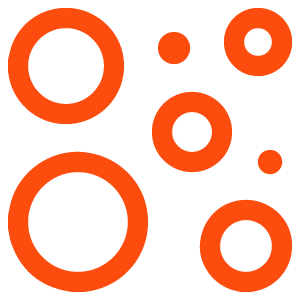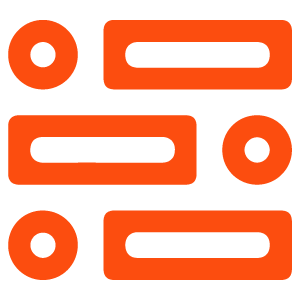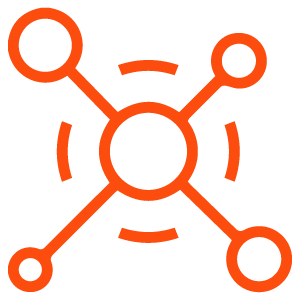#Evolution #Corporate #Print #Design #Trends #Innovations
Print design plays an essential role in corporate identity and communication strategies. As we delve into the evolution of corporate print design, it becomes evident that it has undergone significant transformations over the decades, influenced by technological advancements, cultural shifts, and emergent design trends. This article will explore the historical context, pivotal trends, innovative practices, and future directions in corporate print design, along with a FAQs section to address common queries on this subject.
Historical Context: The Origins of Print Design
The roots of print design can be traced back to Johannes Gutenberg’s invention of the printing press in the 15th century. This revolutionary device enabled mass production of printed materials, paving the way for the spread of information, literacy, and ideas. Over the centuries, print design evolved significantly, shaped by socio-economic factors, technological advancements, and changing consumer preferences.
1. The Early Days: Letterpress and Lithography
In the 19th century, letterpress and lithography became the dominant methods of print production. Corporations began to recognize the potential of print media for marketing and communication. Printed materials such as business cards, brochures, and posters were designed to attract customers and establish brand identity.
Key Characteristics:
- Typography: The art of arranging type became crucial in print design, as businesses sought to create distinct visual identities through unique typographic styles.
- Illustrations: Hand-drawn illustrations were used extensively, adding character and personality to printed materials.
2. The Rise of Modernism
The early 20th century witnessed the rise of modernist design, which emphasized simplicity, functionality, and a break from traditional aesthetics. Influential designers like Paul Rand and Saul Bass contributed to the reimagination of corporate identity through minimalistic design principles, transforming print materials into sophisticated marketing tools.
Key Characteristics:
- Geometric Shapes: Clean lines, shapes, and a focus on readability marked modernist print design.
- Bold Colors and Typography: The use of bold colors and typography became a hallmark of modernist print design, creating visually arresting materials.
The Digital Revolution: Shaping the Future of Print Design
The turn of the 21st century marked a significant turning point in print design with the advent of digital technology. The shift from traditional to digital printing methods revolutionized the industry, enabling businesses to produce high-quality materials at lower costs.
1. Digital Printing Technology
Digital printing technology allowed for quicker turnarounds and greater customization, ushering in a new era of print design. Businesses began leveraging these advancements to create more personalized marketing campaigns.
Innovations:
- On-Demand Printing: Businesses could print materials as needed, reducing waste and storage costs.
- Short-Run Print Jobs: Customization became a key focus, allowing companies to produce limited editions or region-specific marketing materials.
2. The Rise of User-Centric Design
As consumers became more discerning, the need for user-centric design grew. Print materials began to take a more empathetic approach, focusing on the needs and preferences of target audiences.
Key Characteristics:
- Storytelling: Content-driven design became popular, with companies using narrative techniques to engage consumers emotionally.
- Inclusive Design: Print materials began to cater to diverse audiences, incorporating various languages and accessible design elements.
Trends in Corporate Print Design: The Contemporary Landscape
Today, corporate print design is at the intersection of technological advancement and evolving consumer preferences. Several contemporary trends are shaping the way businesses approach their print materials.
1. Sustainability and Eco-Friendly Practices
Sustainability has become a core business value, influencing corporate print design significantly. Companies are increasingly adopting eco-friendly practices in their print production processes.
Innovations:
- Recycled Materials: Businesses are opting for recycled paper and eco-friendly ink to minimize their environmental impact.
- Sustainable Printing Techniques: Techniques such as vegetable-based inks and waterless printing are gaining popularity among environmentally conscious companies.
2. Integration of Print and Digital
The integration of print and digital mediums has led to the development of hybrid print designs that engage consumers across multiple channels. QR codes, augmented reality, and interactive print materials are transforming how businesses communicate.
Innovations:
- Augmented Reality (AR): Brands are leveraging AR to enhance print materials, offering interactive experiences that take marketing to new heights.
- Multichannel Campaigns: Companies are designing print materials strategically to complement their digital marketing efforts, creating cohesive brand experiences.
3. Personalized Marketing
With advancements in data analytics and customer insights, brands are moving toward highly personalized marketing strategies in their print design. Customization allows businesses to create materials tailored to individual preferences.
Innovations:
- Variable Data Printing: This enables businesses to change text and images in print materials based on the recipient’s data, creating a more personalized approach.
- Targeted Campaigns: Companies can create print materials that resonate with specific demographics, enhancing audience engagement and response rates.
4. Minimalist Aesthetics
Minimalism continues to dominate corporate print design, favoring clean lines and whitespace over clutter. This trend focuses on delivering a clear message without unnecessary distractions.
Key Characteristics:
- Highlighting Key Messages: Effective use of whitespace allows brands to emphasize critical information.
- Simple Color Palettes: Limited color schemes contribute to a more sophisticated look and feel.
Innovations in Print Technology
Technological innovations are continually reshaping corporate print design. From advanced printing techniques to software solutions, these developments have streamlined processes and enhanced the quality of print materials.
1. 3D Printing
While traditionally associated with product manufacturing, 3D printing is starting to make its mark in corporate print design. Businesses can create unique promotional materials, packaging, and even prototypes using 3D printing technology.
2. Print Automation Software
Automation software has transformed the way companies manage their print design processes. These solutions simplify workflows, ensuring consistency across marketing materials while saving time and resources.
3. Enhanced Color Management
Advancements in color management software allow designers to achieve precise color representations across various print materials, ensuring brand consistency.
4. Hybrid Digital Printing
Hybrid digital printing combines traditional printing techniques with digital processes, allowing for more intricate designs and faster production times. This approach enhances creativity and efficiency.
The Future of Corporate Print Design
Looking ahead, the future of corporate print design appears promising, with trends hinting at even more innovation and evolution. Key areas to watch include:
1. Sustainable Innovation
As sustainability becomes even more critical, businesses will continue to seek innovative solutions in eco-friendly print practices, including biodegradable materials and energy-efficient printing techniques.
2. Advanced Personalization
Enhanced data analytics will pave the way for more sophisticated personalization strategies in print design, allowing for deeper connections with consumers.
3. Interactive Design
As technology continues to advance, interactive print materials will become more prevalent, offering immersive experiences that merge the digital and physical worlds.
4. Augmented Reality and Virtual Reality
The integration of AR and VR experiences in print materials will redefine consumer engagement, enabling brands to tell their stories in captivating ways.
FAQs about Corporate Print Design
Q1: What is corporate print design?
A: Corporate print design refers to visual communication materials produced by businesses, including brochures, business cards, flyers, and other printed marketing collateral aimed at promoting a brand or message.
Q2: How has technology influenced corporate print design?
A: Technology has revolutionized corporate print design through digital printing, automation software, and advanced color management, making it easier to produce high-quality materials efficiently.
Q3: What are some current trends in corporate print design?
A: Current trends include sustainability, integration of print and digital, personalized marketing, and minimalist aesthetics that emphasize clarity and simplicity.
Q4: Why is sustainability important in print design?
A: Sustainability is crucial as businesses pursue eco-friendly practices, appealing to environmentally conscious consumers while reducing their carbon footprint.
Q5: How can businesses personalize their print materials?
A: Businesses can personalize print materials through variable data printing, targeted marketing campaigns, and leveraging customer data for tailored messaging.
Q6: What role does typography play in corporate print design?
A: Typography is vital in corporate print design as it affects readability, conveys brand personality, and helps establish a strong visual identity.
Q7: How can businesses ensure brand consistency in print design?
A: Companies can ensure brand consistency by creating brand guidelines that outline permissible colors, fonts, logos, and design elements for all printed materials.
Conclusion
The evolution of corporate print design reflects a dynamic interplay between tradition and innovation. From its early beginnings rooted in the printing press to its contemporary practices driven by technology and sustainability, print design continues to be an integral part of corporate communication strategies. With emerging trends and innovations reshaping the landscape, the future of corporate print design promises exciting opportunities for brands to engage and connect with their audiences in meaningful ways. As businesses adapt to these changes, keeping an eye on evolving trends will ensure they remain at the forefront of print design excellence.
Sure! Please provide the article title or topic you’d like me to write about, and I’ll create a 12-paragraph piece for you.








